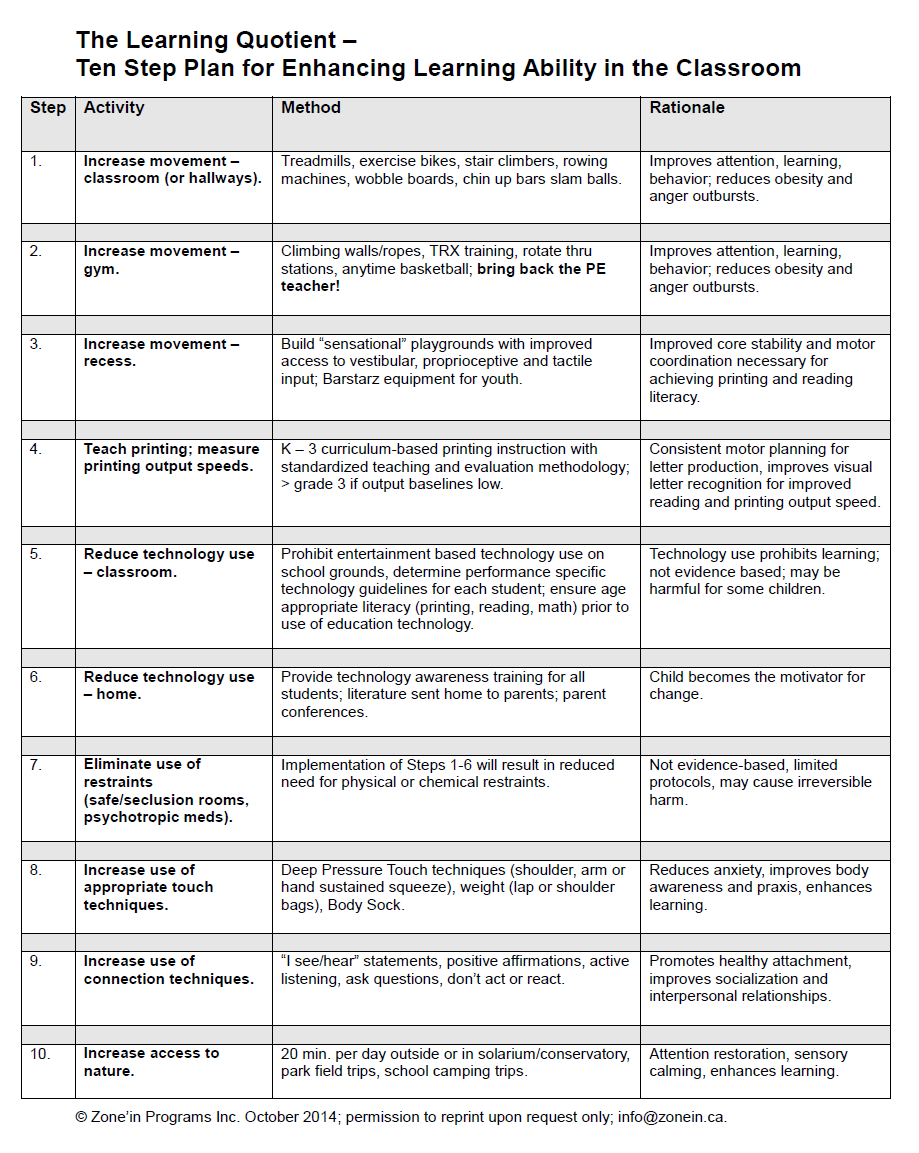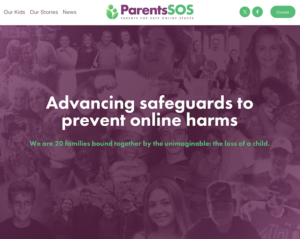 Please refer to the Fact Sheet located on the Zone’In website www.zonein.ca for research references.
Please refer to the Fact Sheet located on the Zone’In website www.zonein.ca for research references.
Today’s education systems are globally embarking on an experiment of epic proportion – the prolific use of computers to educate children. Without long term, replicated research data to support the use of computers as effective teaching tools, school administrations blindly move forward with imposing universal computer use. Without knowledge regarding safety from electromagnetic radiation, and with knowledge showing declining literacy and academic success, schools continue to promote prevalent use of computers in learning environments. While the promise of technology in education is profound, the perils are largely ignored, and could prove to be detrimental to children in the long term. The phenomenon of “tech centric” education proliferates education systems, yet little attention is given to the glaring question “In the absence of the teacher, can a child learn”? This article by pediatric occupational therapist Cris Rowan, explores the perils associated with universal use of technology as a teaching tool, and proposes the “Learning Paradox” – the more technology a child uses, the less likely they are to learn. This article also includes a ten step plan for schools to optimize attention and learning termed “The Learning Quotient”.
With literacy rates plummeting (PISA 2014), classroom management unmanageable (BC teachers strike 2014), one in six students diagnosed with mental illness (Waddell 2007), one in eleven addicted to technology (Gentile 2011), and one in three entering school developmentally delayed (HELP EDI Mapping 2009/13, Hutrow 2014)), schools are struggling to provide adequate education to many students. As governments pull tighter on the purse strings, schools are forced to employ short term measures as cost savings. Elimination of teachers and support staff, increased classroom numbers, reduction of recess, and dilapidation of playgrounds are just a few of the hurdles schools face when trying to meet budget demands. While understandable that school administrations turn to technology as a cost effective way to instruct children, this decision lacks research evidence, and could prove to be harmful to some, if not many, students. The “tech illusion” that computers can actually teach children, has caused many teachers to turn away from evidence based, tried and true teaching methods, especially for printing, reading and math. Canada fell out of the top 10 in global rankings for academic performance on the PISA in 2013, and the U.S., who spends more per capita on education than any other nation in the world, is ranked 25th. It becomes all too clear that technology is not the scholastic pie in the sky that educators dreamed it would be, and the time to face this fact is now. So how do we peer through these muddied waters, and focus on techniques to provide the best education possible for today’s students? An understanding of how technology has changed the human brain already, and implementation of strategies to counteract and repair this damage, is essential and urgent.
Children use an average of 7.5 hours per day of entertainment technologies (Kaiser Foundation 2010), yet experts recommend one quarter that amount (APA 2002/13, CPS 2010). Early studies show that associated with excessive video gaming by youth (> 4-5 hours per day), the brain is pruning neuronal tracks to the frontal cortex, resulting in atrophy (shrinking) of both grey and white matter areas in frontal lobes (Drunkley 2014). Termed “digital dementia”, these youth are demonstrating significant cognitive impairment affecting even the most simple of aspects of daily functioning e.g. remembering bank codes, phone numbers (Sana 2013). Studies also show that for every hour of entertainment technology usage, their risk of attention deficit increases by 10% (Christakis 2007). Fast paced media content, found in many cartoons, You Tube videos, and video games, has been shown to impair executive function, even with low exposure amounts of only 9 minutes (Christakis 2011). These research findings indicate that not all students would benefit from educational technology, and careful consideration should be given toward prohibiting use of entertainment based technologies at school. Chronic video gamers, or those students who already have adhd or difficulty paying attention, meet criteria for The Learning Paradox – the more technology used, the less likely they are to learn.
Educators would be wise to consider parameters of who, what, when, where, why and how of technology use with students, and realize that while technology may be an effective teaching tool for some students, technology is not beneficial, and may even be harmful, for others. Regulating and managing technology use in the classroom setting is imperative, essential, and even urgent for many of today’s students. The following ten step plan has been designed by pediatric occupational therapist Cris Rowan for school environments to enhance student attention and ability to learn. Supporting research can be located on the Zone’in Fact Sheet www.zonein.ca.
Teachers teach…technology entertains.
Additional Reading
British Columbia Knowledge Based Society – A generation of idiots
https://movingtolearn.ca/2014/british-columbias-knowledge-based-society-a-generation-of-idiots
Digital Dementia – Guidelines for educators regarding technology use in school settings
Education Technology Displaces Literacy
https://movingtolearn.ca/2012/eeducation-technology-displaces-literacy
Biography
Cris Rowan is a pediatric occupational therapist, author, and educator on the impact of technology on child development, behavior and learning, and can be reached at info@zonein.ca. Blog comments can be entered at www.movingtolearn.ca. Research references can be located on the Zone’in Fact Sheet found on www.zonein.ca.




